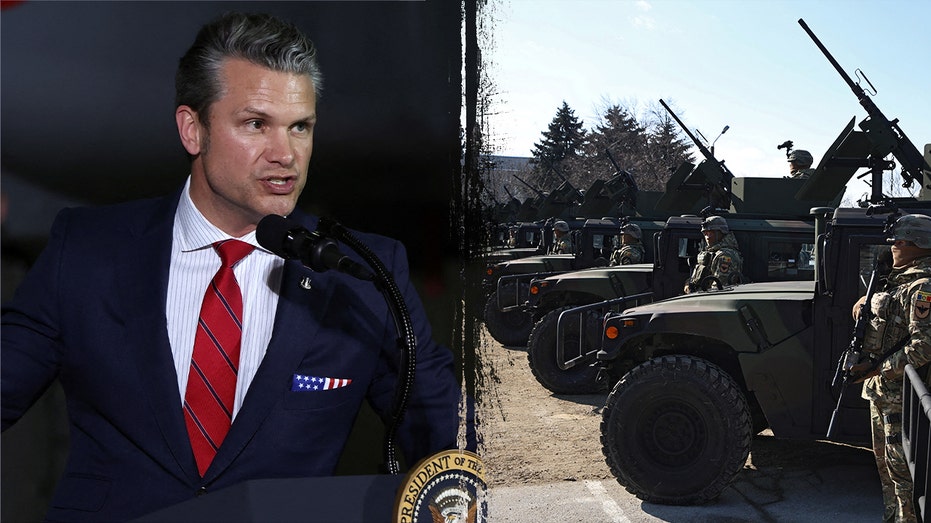Pentagon’s Billion-Dollar Bottleneck: Army Slashes Red Tape to Deliver Modern Tech to Troops

Sarah Johnson
May 2, 2025
Brief
The Pentagon's outdated procurement system keeps U.S. troops waiting for modern gear. Army leaders are slashing red tape to put new tech in soldiers’ hands, fast.
Billions of dollars, endless forms, and American warfighters still waiting for modern gear – welcome to the Pentagon's procurement maze. For decades, the U.S. military’s buying process has churned out legendary vehicles like the Humvee and Apache helicopter. But according to the Army’s Chief Technology Officer, Alex Miller, that same system is stuck in a bureaucratic rut, still clinging to requirements from the Cold War era and bogged down with paperwork heavier than some of its armored vehicles.
Miller points out that the Army is still operating over 100,000 Humvees, relics from the 1980s, despite dramatic changes in battlefield threats. During the War on Terror, roadside bombs made it painfully clear that Humvees couldn’t keep up with modern dangers, but the Army kept buying them while trying to catch up with newer, more durable designs like MRAPs and Strykers. Miller’s take: this isn’t just a one-off mistake, it’s a systemic problem with how the military buys things.
The real kicker? Even as the Army rolls out newer vehicles like the JLTV, the rapid pace of tech change means these upgrades risk becoming outdated before they’re even fully deployed. Miller admits, "We continue to buy them and have them in the budget, but that might not be the right answer either." The pace of innovation is so quick, it’s like trying to win a Formula 1 race with a family minivan – no matter how shiny it is.
So what's the fix? The Army is overhauling its entire acquisition process. With a push from Defense Secretary Pete Hegseth, the focus is now on ditching outdated and redundant programs. The plan is to streamline everything from regulations to headquarters structure, aiming to get new tools into soldiers’ hands before they’re collecting dust in a warehouse.
Miller warns that some of the Army’s iconic platforms—like the Apache helicopter and Paladin howitzer—might not even be relevant for future conflicts. Case in point: Ukraine hasn’t asked for a single Apache, and most Army stockpiles of Paladins are just to maintain a minimum number, not because anyone’s begging for more. The message is clear: the Army’s warehouse of legacy hardware might be more history museum than battlefield-ready.
To break the cycle, the Army’s new initiative, "Transforming in Contact," puts requirement writers in the field with soldiers, swapping 300-page reports for real-time feedback and slashing documents down to just 10 pages in some cases. The result? Units training at Fort Johnson, Louisiana, will soon be decked out with autonomous vehicles, advanced batteries, and swarms of drones—thanks to Army brass finally cutting through the red tape and just doing the right thing.
But modernization isn’t always the golden ticket. Defense expert Abigail Blanco notes that sometimes, old tech gets the job done just fine. The Air Force, for instance, stuck with the Cold War-era U-2 spy plane over the much pricier RQ-4 Global Hawk drone, proving that newer isn’t always better—especially at $220 million a pop.
Still, efforts to streamline the Army’s procurement process have hit resistance from some lawmakers and officials worried about jobs and budgets back home. Miller says the Army is pushing hard – not for more money, but for smarter spending. As Blanco points out, Congressional districts with factories producing Humvees or tanks have every reason to keep those assembly lines humming, no matter what the battlefield actually needs.
At the end of the day, Miller insists that acquisition reform isn’t about cutting corners, but staying ahead of adversaries who don’t have time for endless red tape. He sums it up: "The environment, the threat, and the reality change so fast. We have permission to just be ruthless about working with commercial entities ... and figuring out what can we get in the hands of soldiers faster." In other words, the Pentagon is finally giving bureaucracy a much-needed boot out the door.
Topics
Editor's Comments
Only the Pentagon could spend billions and still have soldiers rolling around in vehicles older than most TikTok stars. You have to wonder: if the Army's paperwork weighed as much as a Humvee, would that finally qualify as 'heavy armor'?
Like this article? Share it with your friends!
If you find this article interesting, feel free to share it with your friends!
Thank you for your support! Sharing is the greatest encouragement for us.



